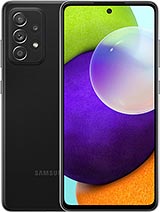Infinix Zero X Pro review

The competition
Finding an exact specs-and-feature match for the Infinix Zero X Pro among the competition at this price point is a tall order. One of the main bits that is hard to match is definitely the dedicated telephoto. An optical 5x unit, no less. There is a Realme 6 Pro from last year that does have a 2x 12MP telephoto, but it's not really close in terms of hardware, nor is the Realme 6 Pro worth recommending in 2021. The same goes for the Oppo Reno4 Pro 5G. Even matching the 108MP main cam on the Zero X Pro without breaking the bank is a tall order, but not an impossible one.

The Xiaomi Redmi Note 10 Pro instantly springs to mind. It is a very popular device, and for a good reason. Some of its highlights include a 6.67-inch, 120Hz AMOLED display, just like on the Infinix Zero X Pro, but with much better brightness and official HDR10 support. Not to mention that the Xiaomi has proper Widevine L1 support. Then, in no particular order, there is a stereo speaker setup, a large 5,020 mAh battery, a Snapdragon 732G chipset, Gorilla Glass 5 on the display and an IP53 rating on the body. Also, NFC and an infrared port.
Then there is also the Realme 8 Pro, which has a slightly smaller 6.4-inch Super AMOLED panel, with high brightness, but just 60Hz refresh rate and no fancy HDR support either. You also get a slightly smaller battery but a faster 50W charging and a slightly worse Snapdragon 720G chipset, no stereo speakers and no ingress protection. So, overall, a more cautious recommendation than the Redmi Note 10 Pro.




Xiaomi Redmi Note 10 Pro • Samsung Galaxy A52 • Xiaomi Poco F3 • OnePlus Nord CE 5G
Samsung currently has a particularly strong Galaxy A lineup. At current market prices, we believe a Galaxy A52 might be within budget. Some of its highlights include an eye-catching exterior with IP67 rating and Gorilla Glass 5, stereo speakers, a 4,500 mAh with 25W charging, 6.50inch, 90Hz Super AMOLED panel, a Snapdragon 720G chipset and a 64MP main and 12MP ultrawide cameras. A very well-rounded phone with a promise for extended software support and updates. And just in case that is a bit pricy on your local market, there is the Galaxy A32, which is a slight specs downgrade.
We would be remiss not to mention Xiaomi's excellent Poco line. The Poco F3, in particular, is a great contender, with its 6.67-inch, 120Hz, HDR10+ AMOLED panel, IP53 rating, stereo speakers, 4,520 mAh battery, with 33W charging. Sure, the 48MP, plus 12MP ultrawide and 5MP macro camera setup is not nearly as impressive, but you do get a notably more powerful Snapdragon 870 chipset with 5G connectivity. If you would rather save yourself a buck and don't mind an IPS display, you can also get amazing performance from the Poco X3 Pro with its Snapdragon 860 chipset.
Last but not least, a slightly different offer in a number of ways and one that could be particularly viable on some markets like the US - the OnePlus Nord CE 5G. OxygenOS is kind of a departure from the heavily customized UIs on many of the other mentioned phones. And with the Nord CE 5G, you still get a 90Hz AMOLED panel, a 64MP main and 8MP ultrawide camera setup and a 4,500 mAh battery with 30W charging, among other things.
The verdict
The Infinix Zero X Pro is nothing short of an intriguing foray into a more premium device segment for the company. Its price is still a bit hard to precisely pinpoint, but if we go by the fairly safe assumption of a $400 starting MSRP for the 8GB/128GB model, the value proposition is certainly strong. At least on paper, that is.

Some aspects of the Zero X Pro are hard to ignore and deserve praise, like the eye-catching design and solid build, sharp and snappy AMOLED panel, with surprisingly competent 120Hz handling. In fact, XOS 7.6 is actually a very fluid and highly feature-dense Android. Battery life is also great on the Zero X Pro, and so is performance, where the phone practically squeezes every last bit of number-crunching power and utilizes every feature of the MediaTek Helio G95.
However, once you dig a bit deeper into what is otherwise a stellar specs sheet on the surface, various disappointing details start to creep up. Like the fact that the display has pretty bad color accuracy and absolutely no options to adjust colors. Worse still, Widevine L3 limits online streaming to just 480p. And despite the fact that Infinix proudly advertises things like "Smart PA" and has a really in-depth DTS equalizer system, the Zero X Pro just has a single bottom-firing speaker and not a particularly impressive one either.
Then there is the camera situation, where generally the hardware is impressive and capable of producing some great shots, but only at times and in certain conditions. As things currently stand, there are plenty of unfortunate inconsistencies with the camera experience. Also some less than scrupulous aspects like the fact that 108MP shots are simply upscaled 12MP ones since the Helio G95, and its DSP can't even handle such resolutions. Just like the Widevine situation is a bit inexplicable to us, so is the mono audio capture for video recording.

Like the saying goes, "the truth is in the details," and unfortunately, Infinix managed to fail just about as many of those as it nailed with the Zero X Pro. That makes it kind of a hassle to expect a consistently good experience out of - a reality that is not really worth settling for in today's smartphone market. You can get a much more consistently great experience elsewhere. Overall, it's a decent phone that likely won't disappoint an average user, but definitely not a device we would recommend actively seeking out and choosing.
Pros
- Solid and strong plastic body, with nice finish and in-hand feel. Apple-inspired, yet recognizable design.
- The display is sharp, with decent brightness, pretty good 120Hz handling and good pixel response times.
- Great battery life and surprisingly quick 45W charging.
- XOS 7.6 is not the latest XOS10 but still has many features and customization and runs well, but is a bit chaotic.
- The Mediatek Helio G95 offers solid all-round performance. In fact, Infinix is consistently squeezing out a few percent extra performance compared to other Helio G95 devices.
- The main camera takes decent, but unimpressive photos day and night. The 5x telephoto does pretty well in daylight. Selfies are great and you get an LED selfie flash for low-light conditions. Autofocus on the ultrawide makes for great macro shots.
- Solid 4K clips from the main cam and great looking 5x 1080p clips from the telephoto. Decent video stabilization.
- FM radio, 3.5mm jack, dedicated microSD slot.
Cons
- No ingress protection. The front and back are advertised as glass, but we have no idea how tough it is.
- Disappointing color accuracy with no modes or adjustments available. Widevine L3 limits you to 480p streaming.
- No stereo speaker setup, not even a hybrid one, just a single bottom-firing speaker with average performance.
- The ultrawide has some notable exposure issues. The telephoto struggles in low-light. Super Night Mode is inexplicably only limited to the main and selfie cams.
- Mono audio in video recordings and no h.265 (HEVC) option. Disappointing ultrawide videos. Unimpressive low-light video capture from all cameras.
- No NFC.
Reader comments
- mim
- 23 Oct 2023
- Nu6
How come you forgot to mention the 60x zoom in your review
- Sutton0028
- 31 Mar 2023
- tj8
This phone is priced 180 USD right now, so i guess it is the budget king on the camera phone segment.
- Anonymous
- 02 Jan 2023
- Nu7
Sorry about your phone getting stolen